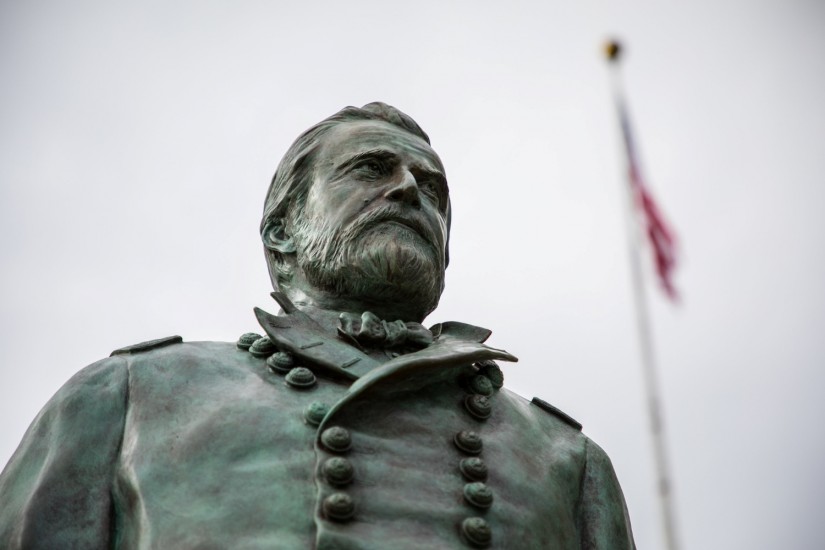At his death in 1885, Grant was a national hero known throughout the world. Members of the Corps of Cadets saluted the train carrying his coffin past West Point on the way to New York City. More than a million and a half people crowded the streets of Manhattan to watch his funeral procession, and his tomb, dedicated in 1897, remained the city’s most popular monument for almost two decades. There are Grant statues in Washington, D.C., Philadelphia, San Francisco, Chicago, Brooklyn, and Vicksburg. Grant’s status still looked secure in 1900, when Theodore Roosevelt placed him in the empyrean: “mightiest among the mighty dead loom the three great figures of Washington, Lincoln and Grant.”
Until this spring, however, Grant was a little hard to find at his alma mater. Wherever he did appear, it was in the company of Lee. Their portraits flank a doorway inside the library, and in the old library they faced each other, like duelists suspended in time, at opposite ends of the reference room. Lee Barracks sits next to Grant Barracks. A structure called Reconciliation Plaza, given by the Class of 1961 on the occasion of its 40th reunion, features reliefs of Grant and Lee at its center. A series of panels dramatizes local moments of amity across the lines in the midst and wake of the war. These plaques tell a highly sentimental story about reunion and healing—especially that between West Point graduates who found themselves on opposing sides of the battlefield. But you can read them all without ever learning why the war was fought and what it achieved. I suspect that the monument’s donors, a class that suffered great loss in Vietnam, found in this narrative a way to comment obliquely on the nation’s failure to reconcile itself to their war.
As I have suggested, Grant’s long residence at the periphery of West Point’s Civil War consciousness owes in part to personality but in larger measure to the wrenching reality of the military academy’s intimate relation to the nation’s greatest cataclysm. Its graduates, all trained to serve in the United States Army, ended up filling the ranks of the rebels as well as those of the federals. Lee, who had been the academy’s superintendent in the 1850s, nevertheless could not conceive of a loyalty higher than one to the soil of his native state. The very southern character of 19th-century West Point was not lost on its critics: during the Civil War some legislators argued for the school’s closure, given its apparent aptitude for nurturing traitors.
